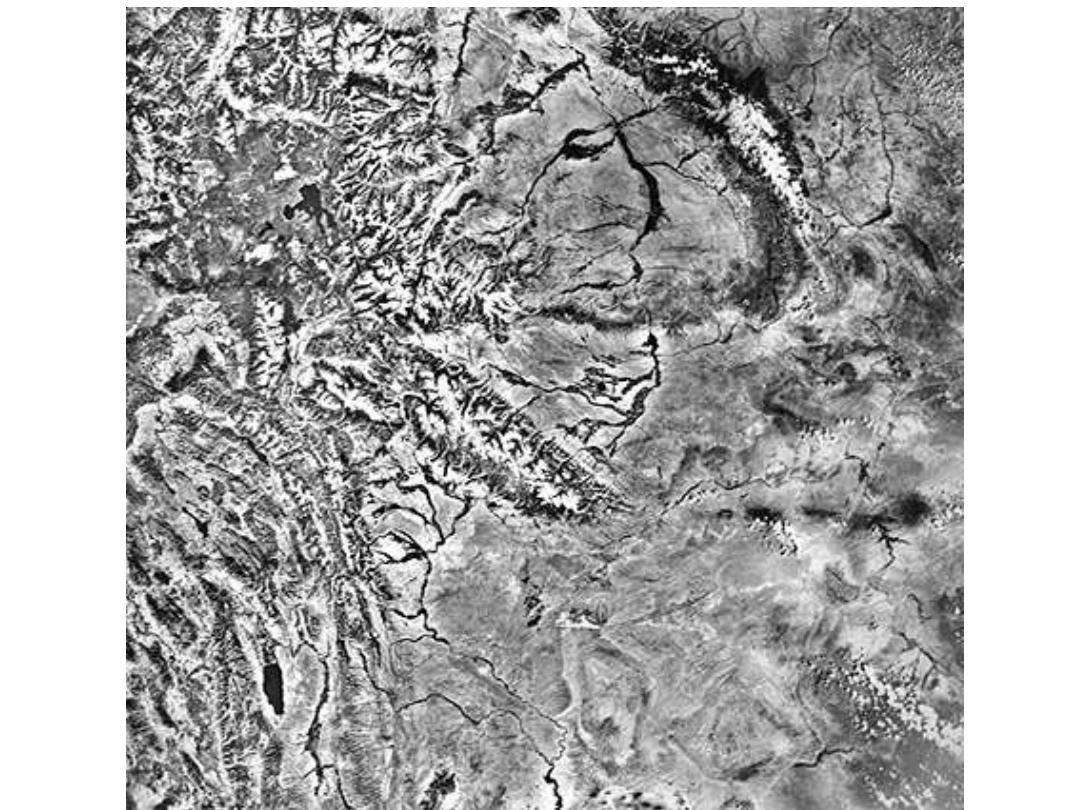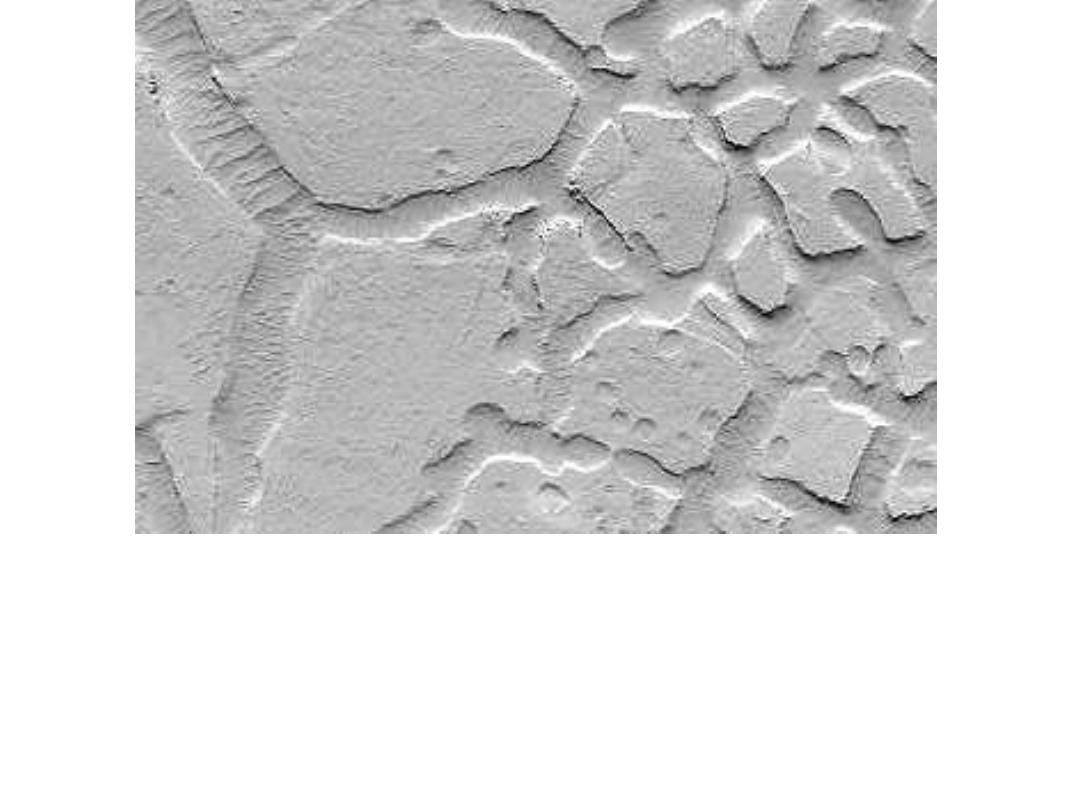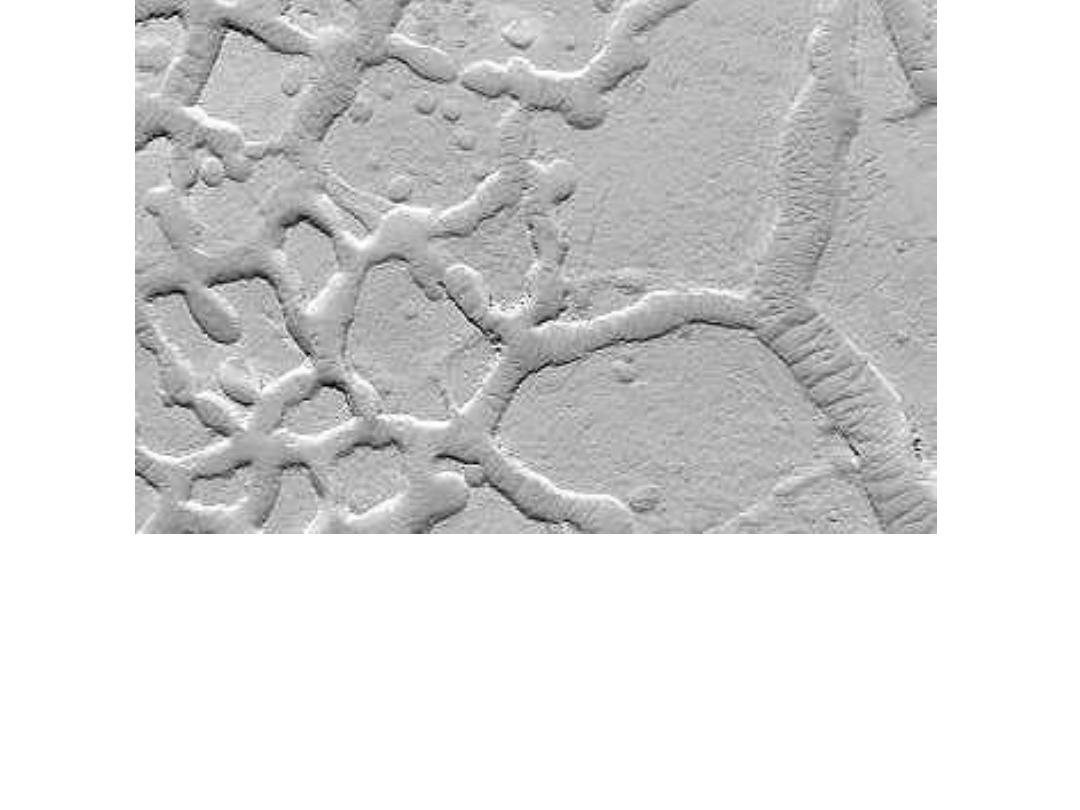
Air Photo Interpretation
Principles
Shape
Size
Shadow
Tone/Color
Texture
Pattern
Relationship to Surrounding Objects
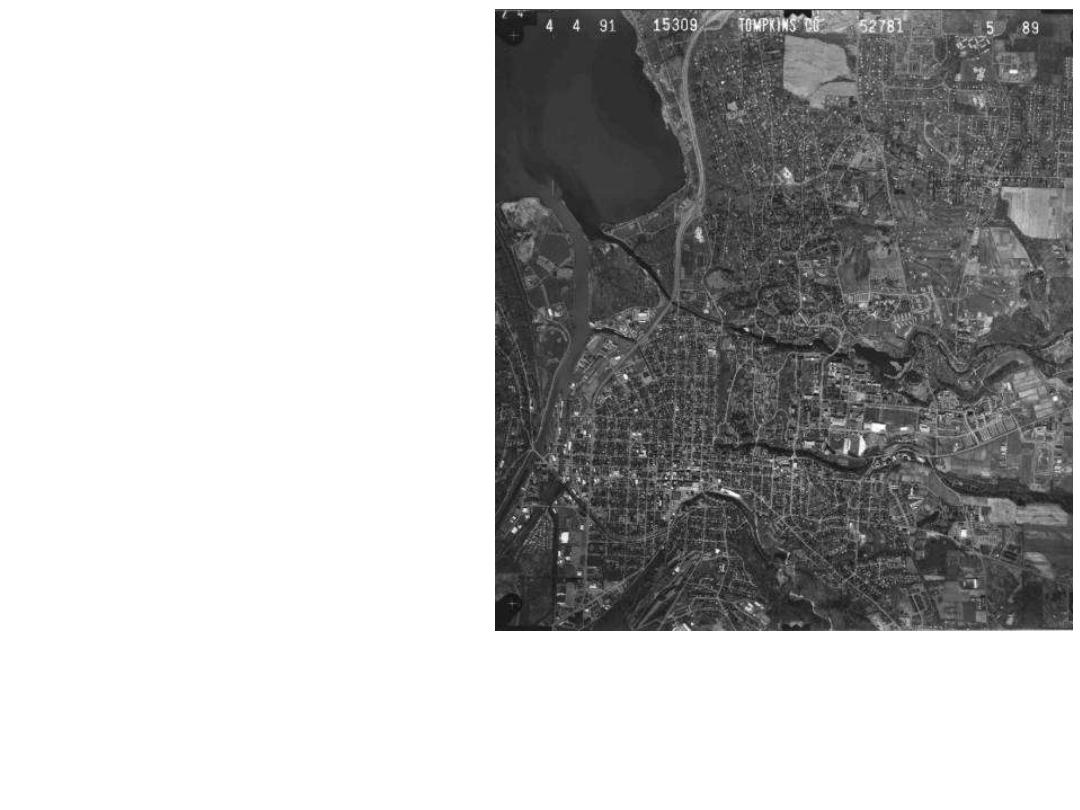
• Because the BLM document
is mostly
“cartoon”
descriptions of images on a
photo, we will explore some
real examples, using the
BLM text to guide our
discussions. The photo on
the right is a black and white
photo of the City of Ithaca
and the Cornell University
campus taken in 1991. More
specifically, it was taken on
April 4, 1991 (look in the
upper left hand corner).
• So lets take a quick tour of
the photograph
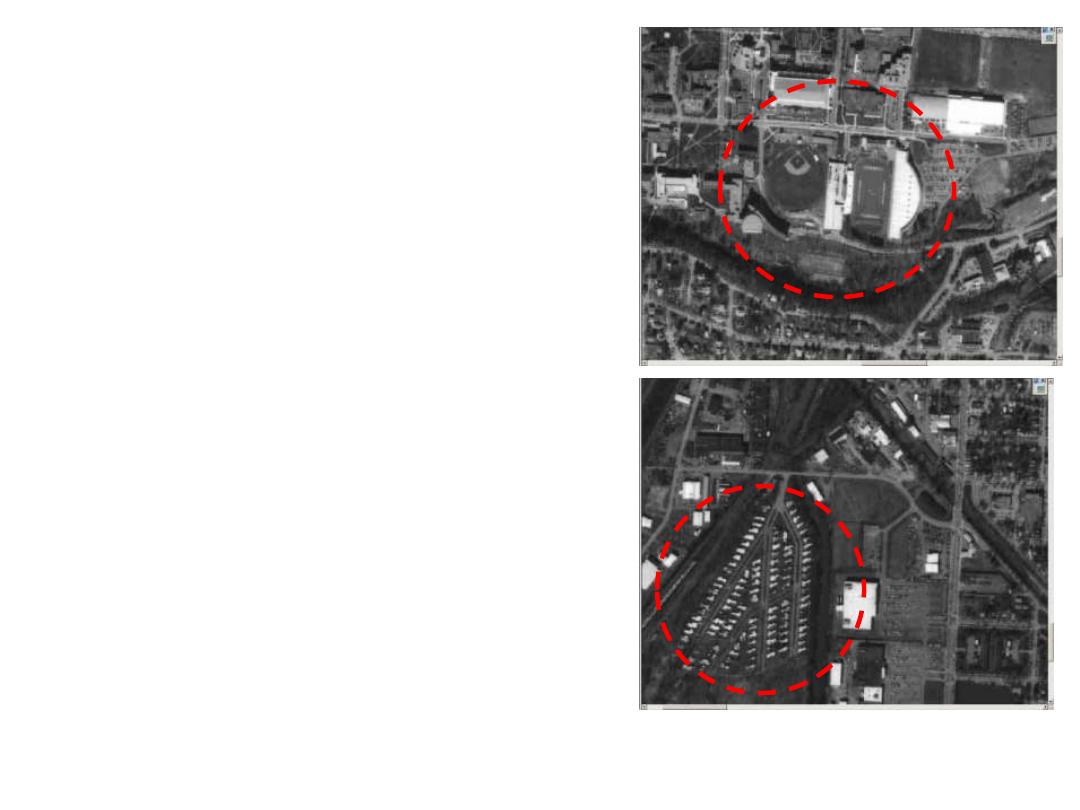
• Size: the size of an object is one
of the most useful clues to its
identity. Also, understanding
the size of one object may help
us understand the sizes of other
objects.
• For example, most of us have a
feeling for the size of a baseball
field, and football field. When
we observe these objects on a
photograph, it will help us to
understand the sizes of other
objects on the photograph.
• For example, on another part of
the photograph we have a trailer
park. This could easily be
confused with a parking lot, but
when we understand the size of
the objects we will realize that
the objects in the trailer park are
much too large to be cars.
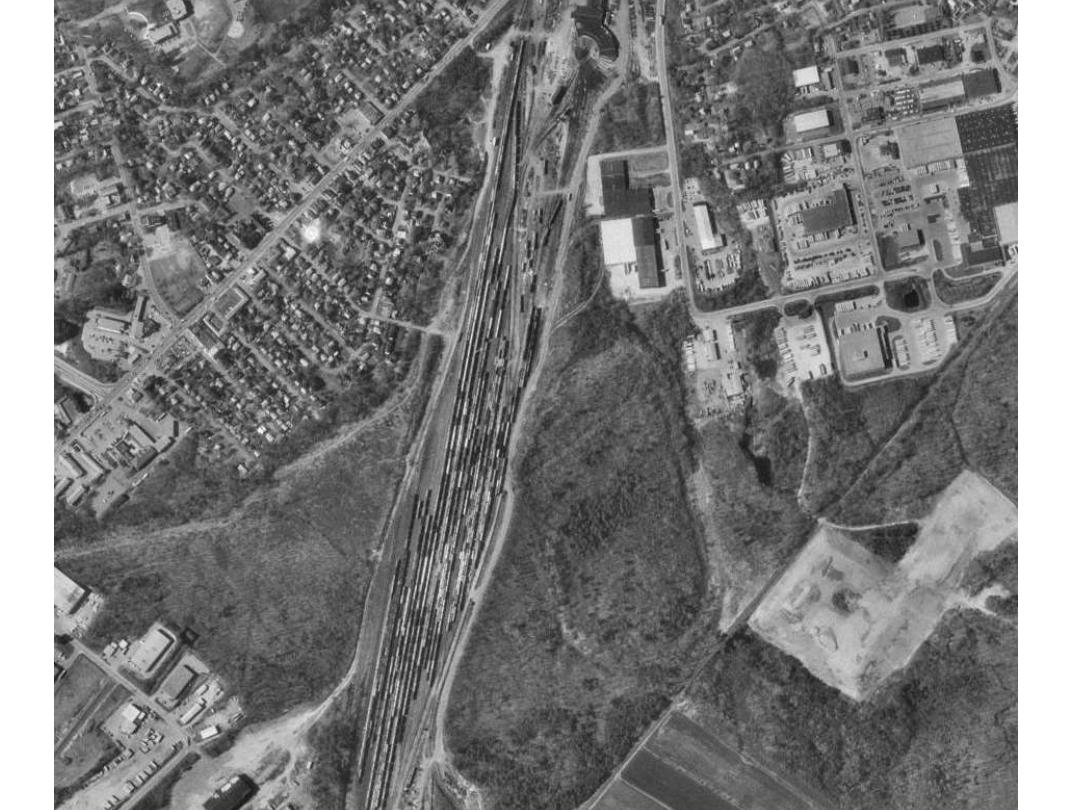
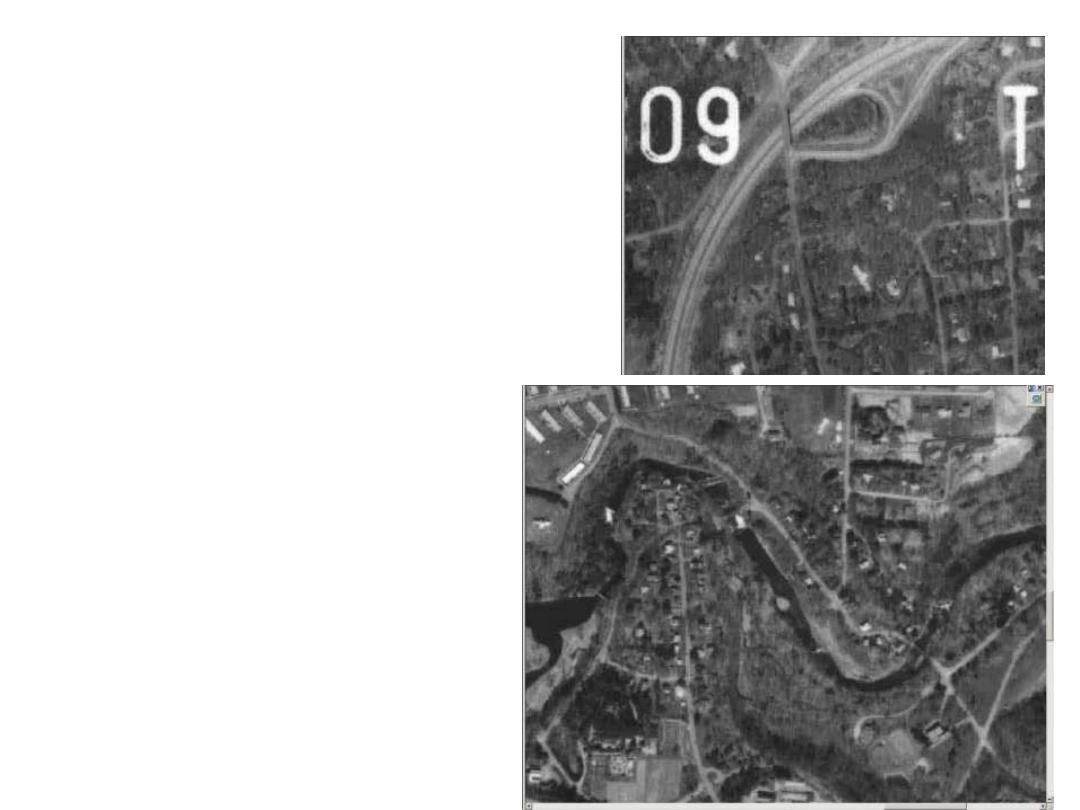
• Shape: Shapes can often
give away an object’s
identity. For example, a
cloverleaf is a very
distinctive feature of a
highway, while a stream’s
meandering gives away its
identity.
• And again, the baseball
diamond we just looked at
also has a distinctive
shape.
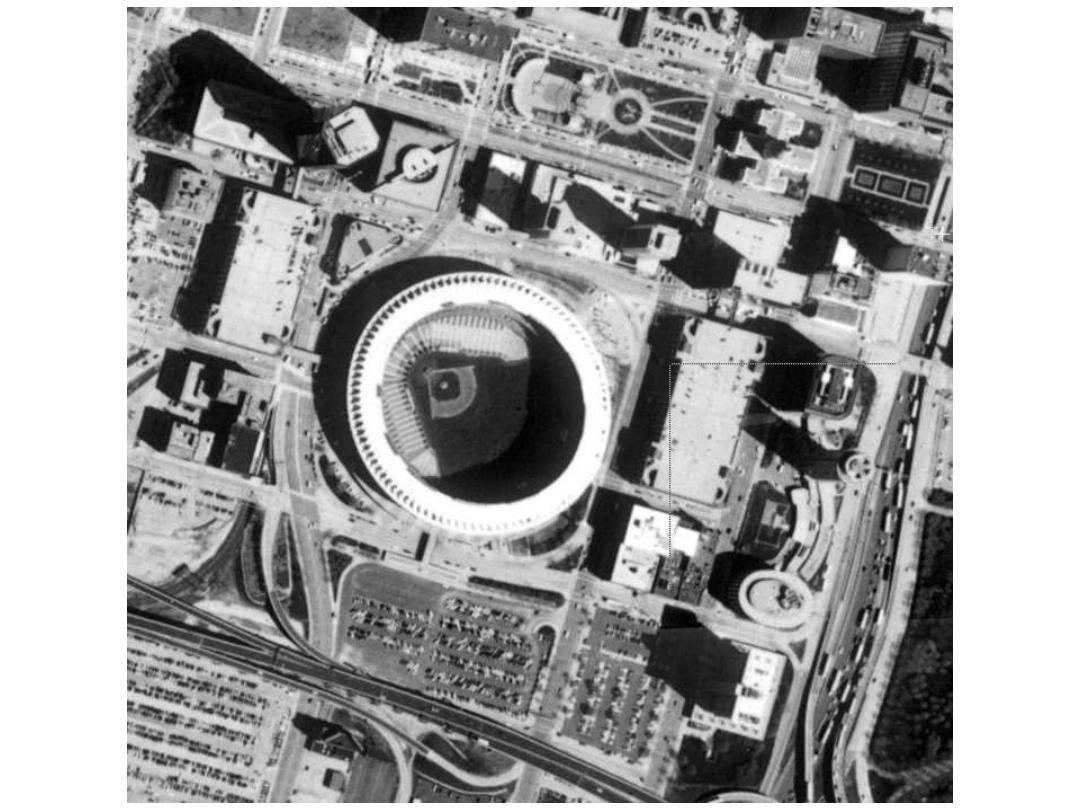
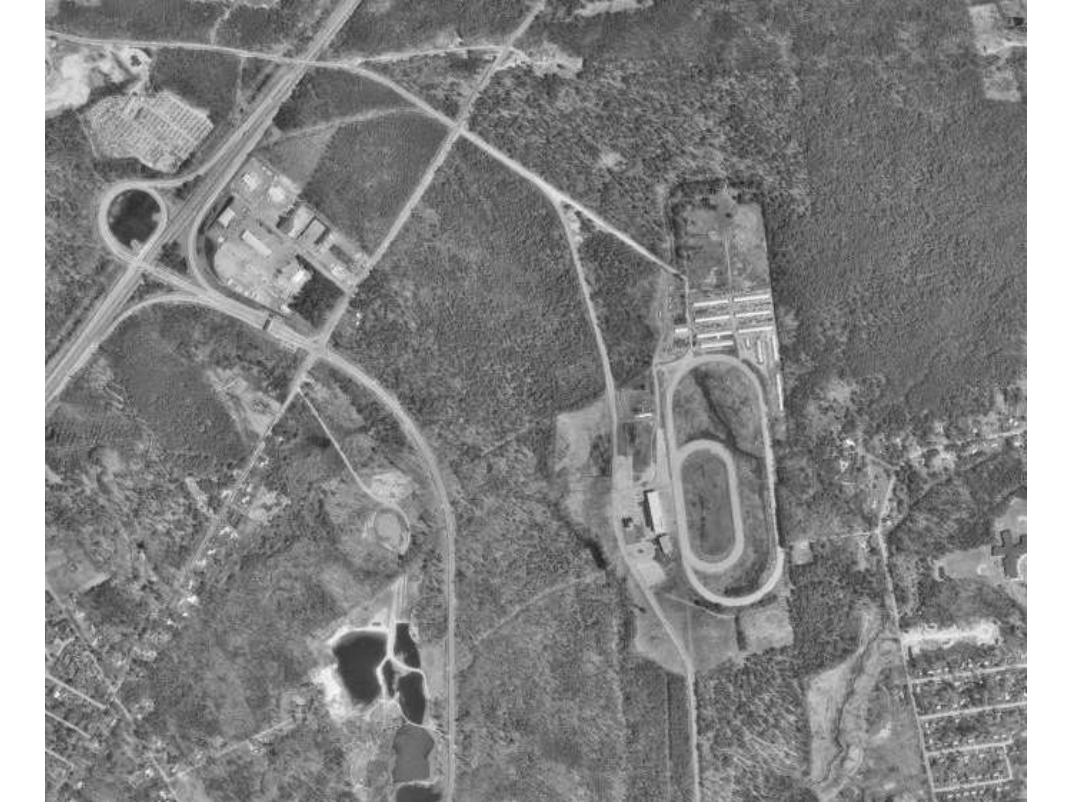
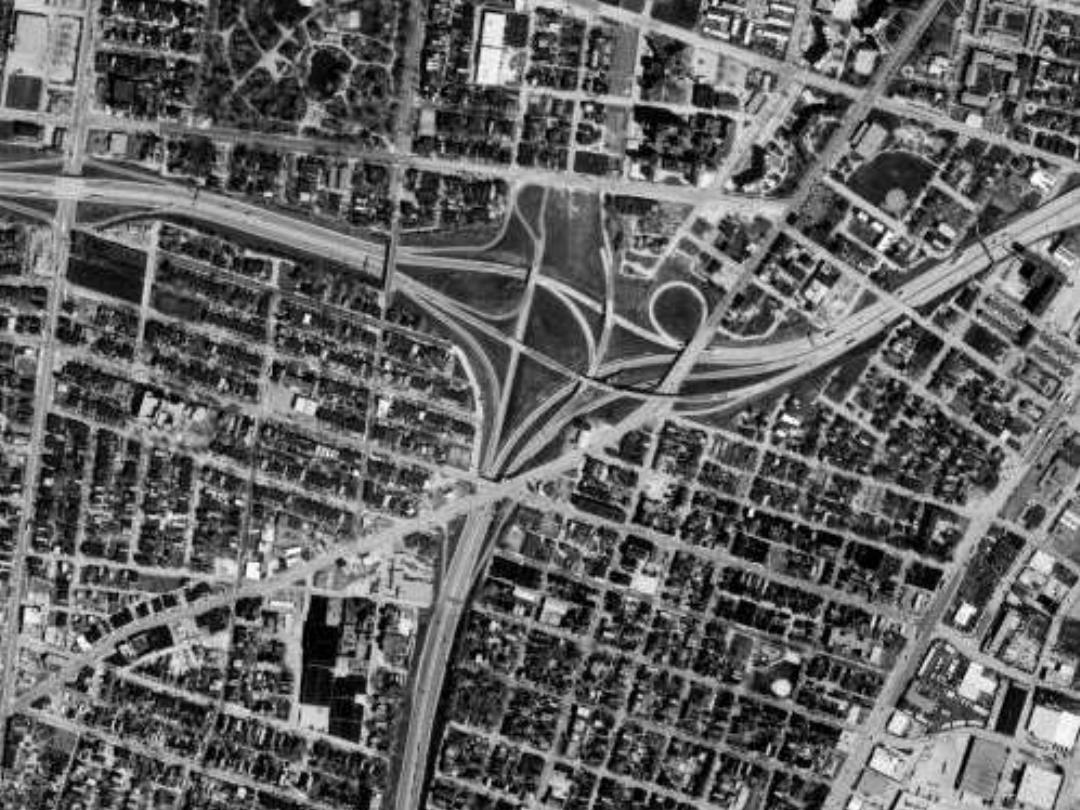
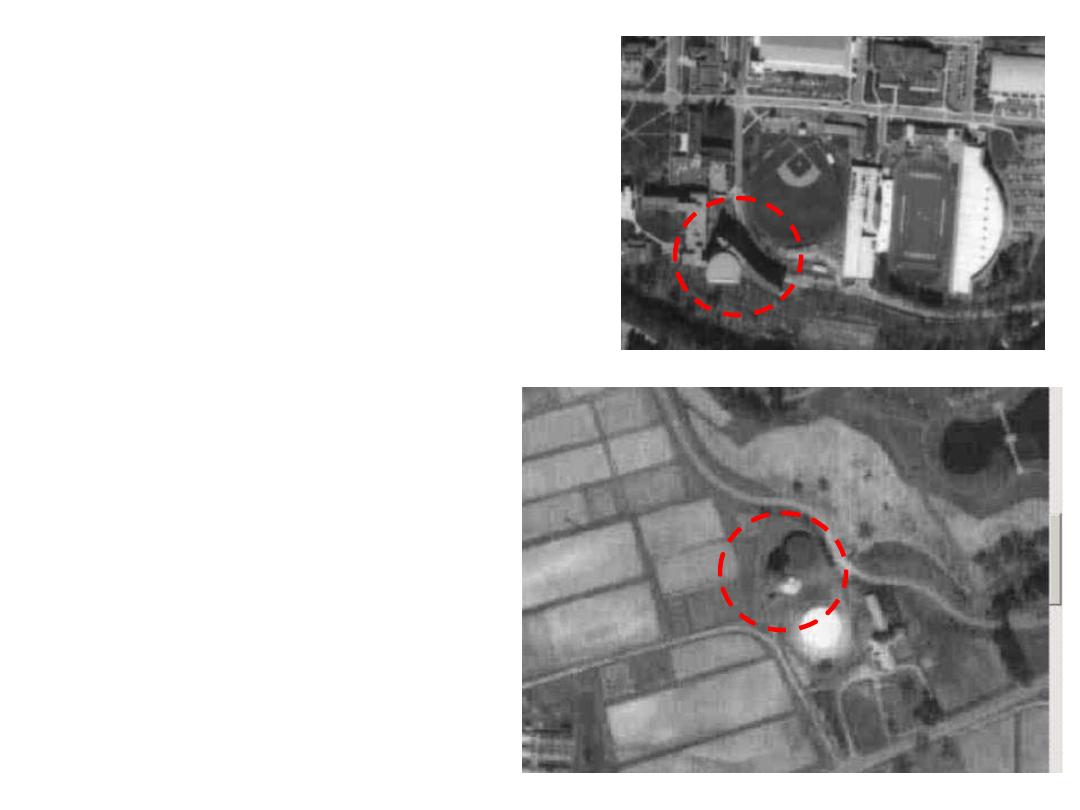
• Shadow: shadows often give us
an indication of the size and
shape of an object. When we
look at aerial photographs we
often see a vantage point we are
not used to: an overhead view.
• Shadows can let us “cheat”
alittle to see the side of an
object. The photos on the right
show the Cornell Theory
Center, which casts a rather
large shadow, indicating the
building size, and a water tower
on one of the farms on campus.
If you look closely, you can see
the “legs” of the watertower.
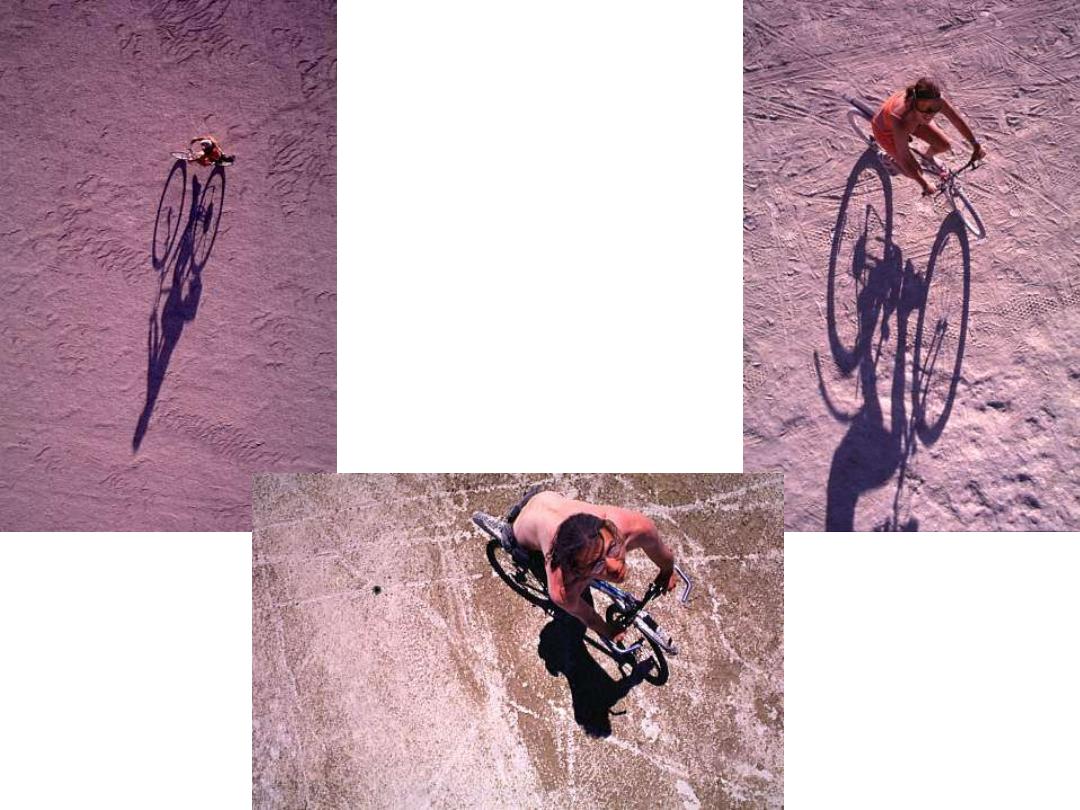
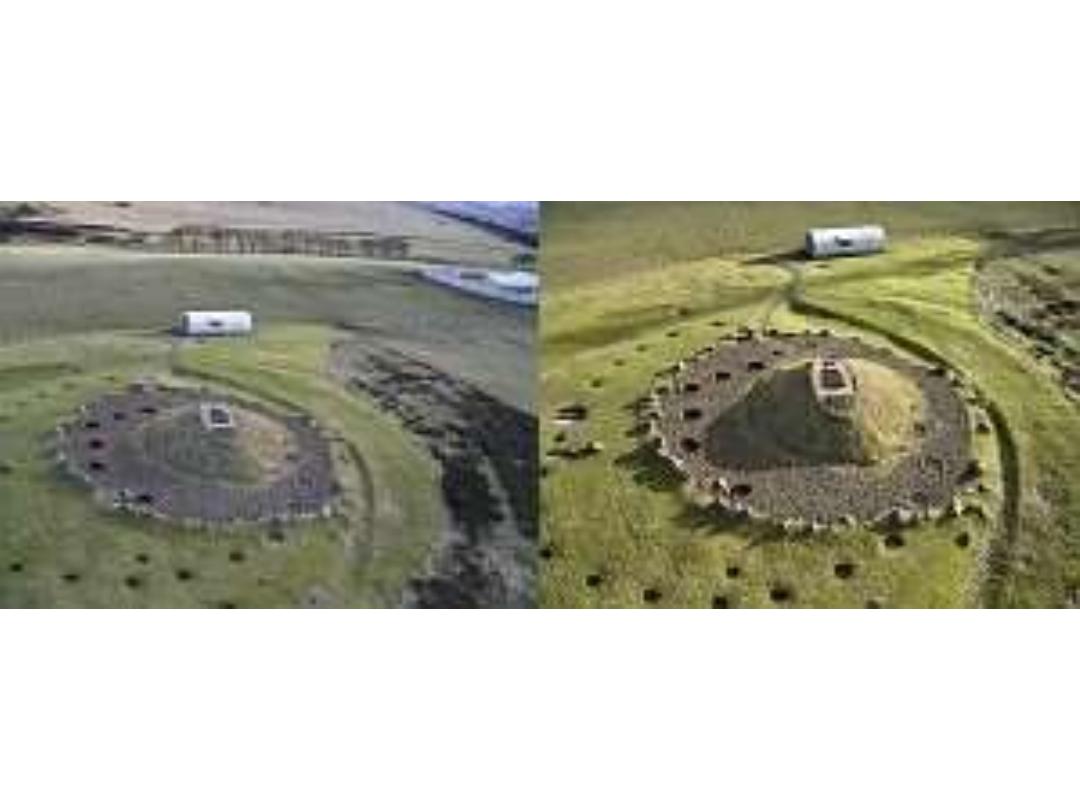
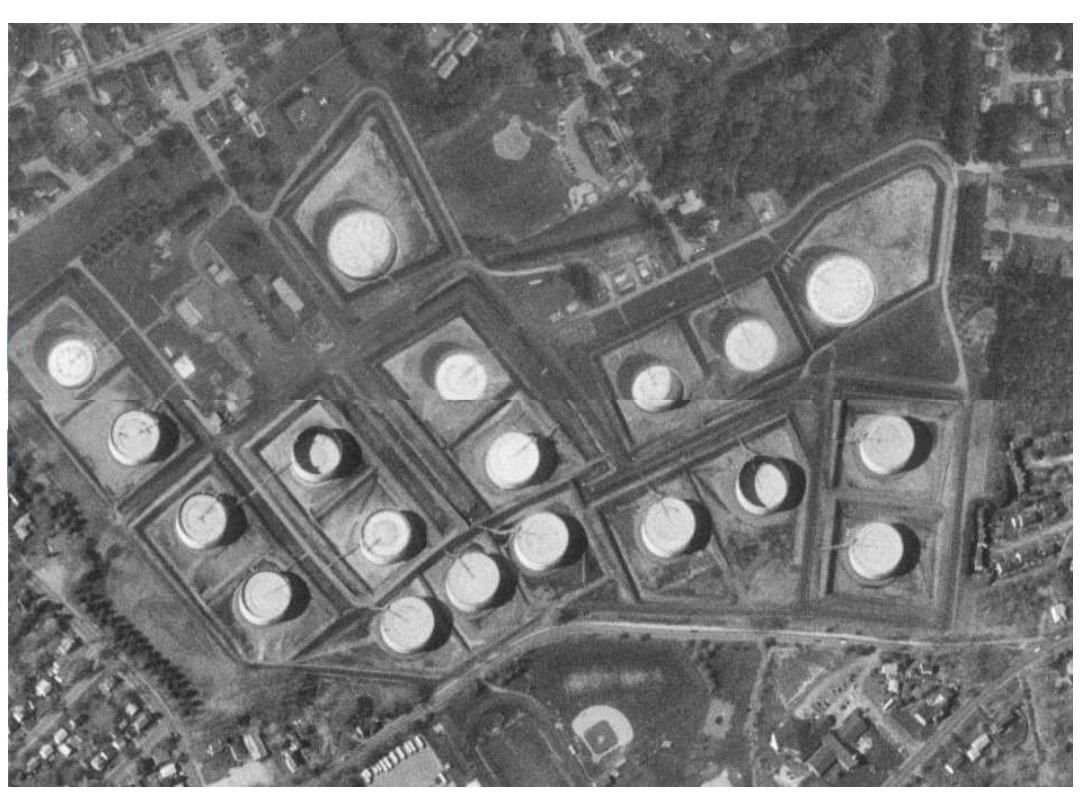
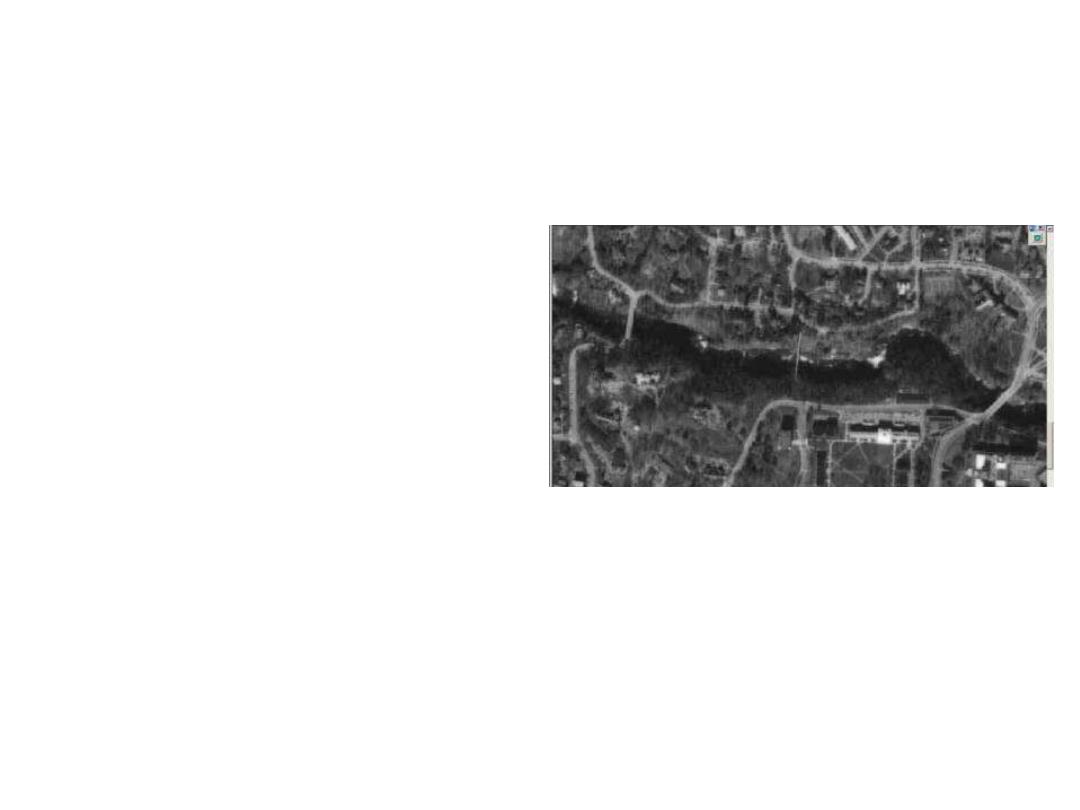
• Shadow: while
shadows are helpful,
they can also be a
hindrance. As we try
to look down into the
gorge on the Cornell
campus, we can see
very little due to the
shadows cast.
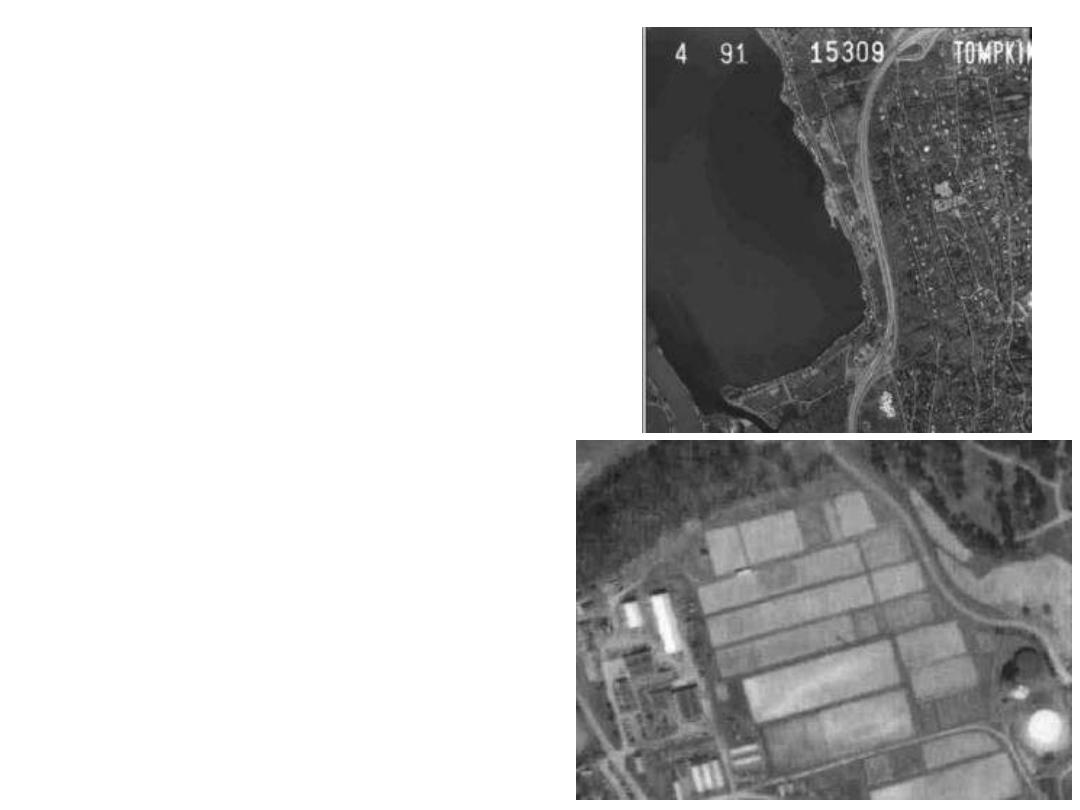
• Tone: You can see the
tonal contrast between
Cayuga Lake and the
land area. Also, there
is good tone
representation for wet
or dry soils.

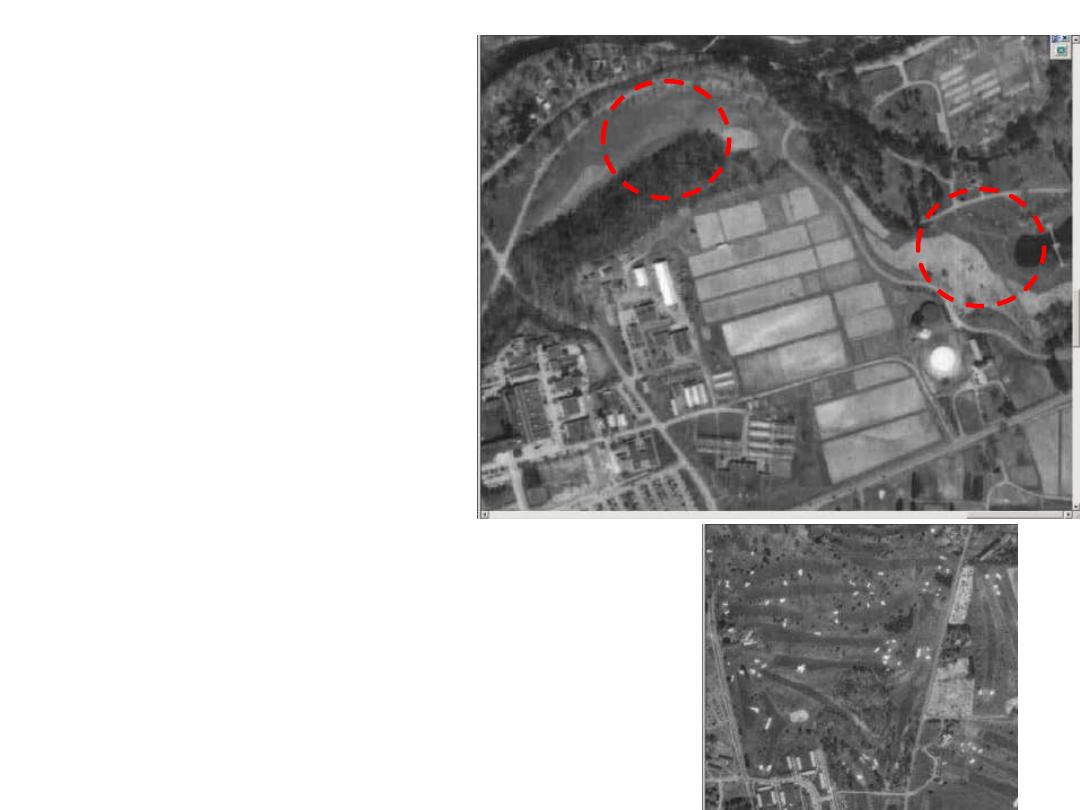
•
Texture: In this photo we see the
Cornell Plantations and Botanical
Garden, as well as the experimental
agricultural plots. Especially in the
Plantations, you will see the
different textural characteristics
between the mowed lawns and the
grassy areas. Notice too, the small
pond in the Plantations (an example
of tone)
•
Additionally, around another
natural area on campus you can see
the textural difference of trees vs.
more of a grassland area.
•
And again, as you look at the
agricultural plots you will notice a
different texture from the forested
areas.
•
Finally, in the golf course shown
below there are obvious patterns
between managed lawns vs. the
unmanaged lawns, in addition to
the tonal differences between the
lawns and sand traps.
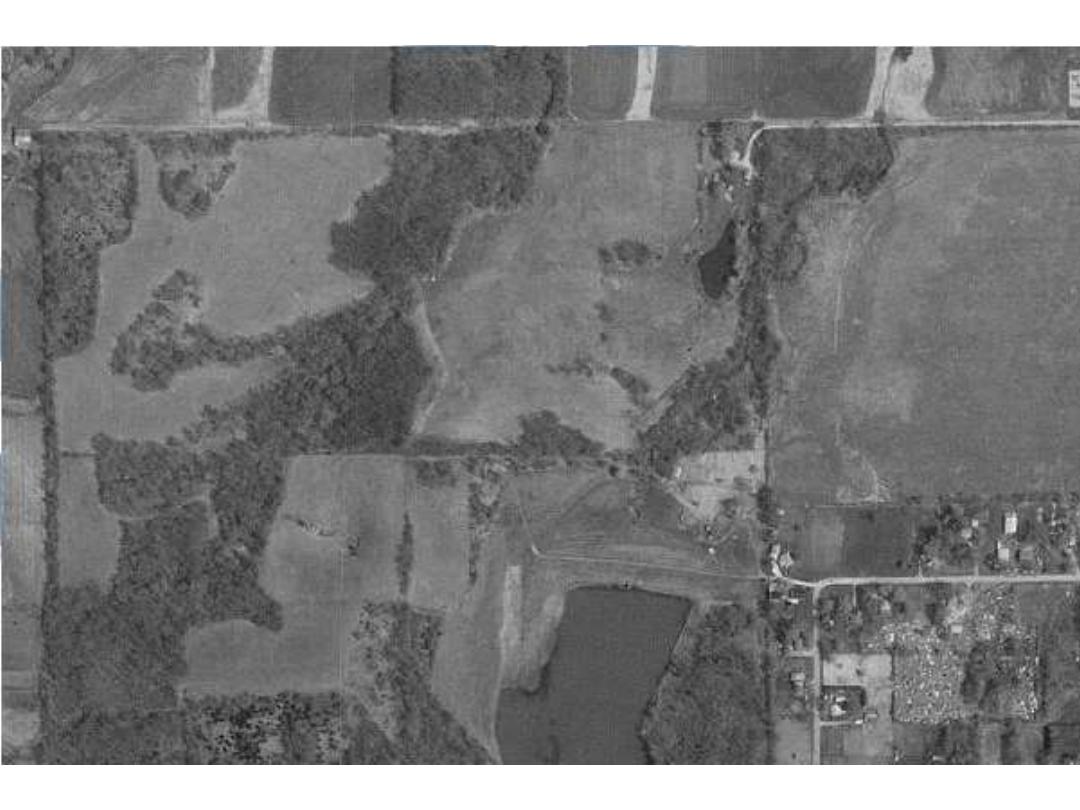
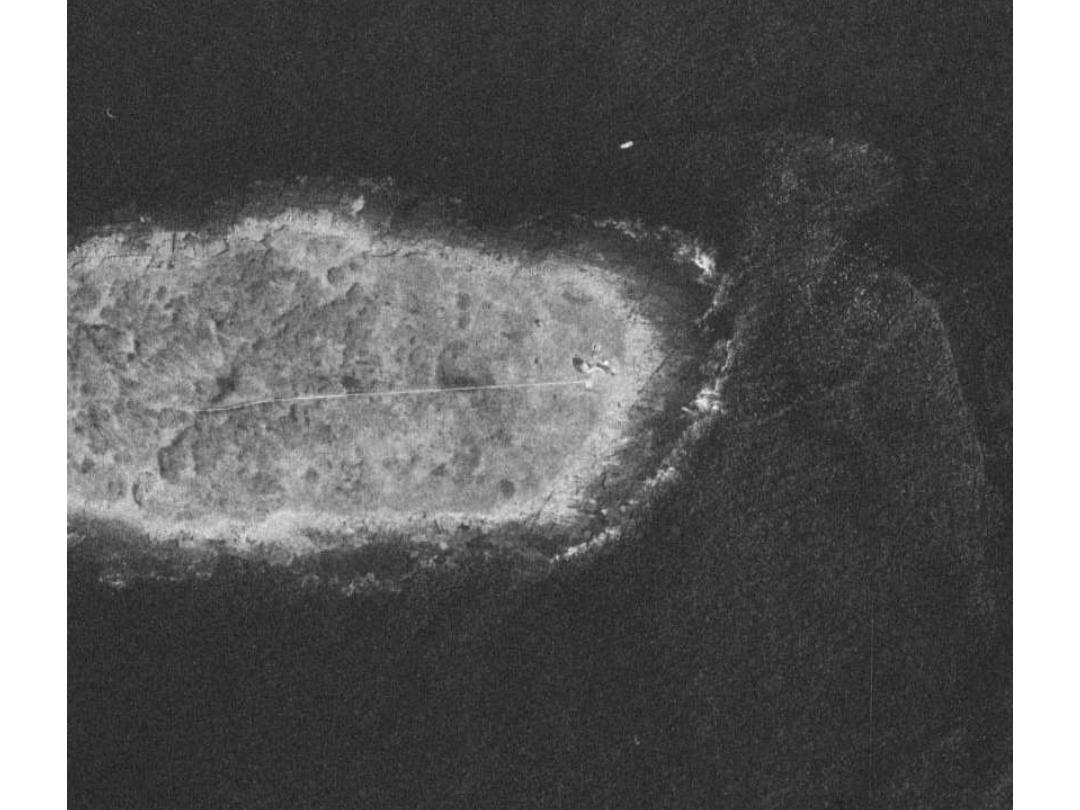
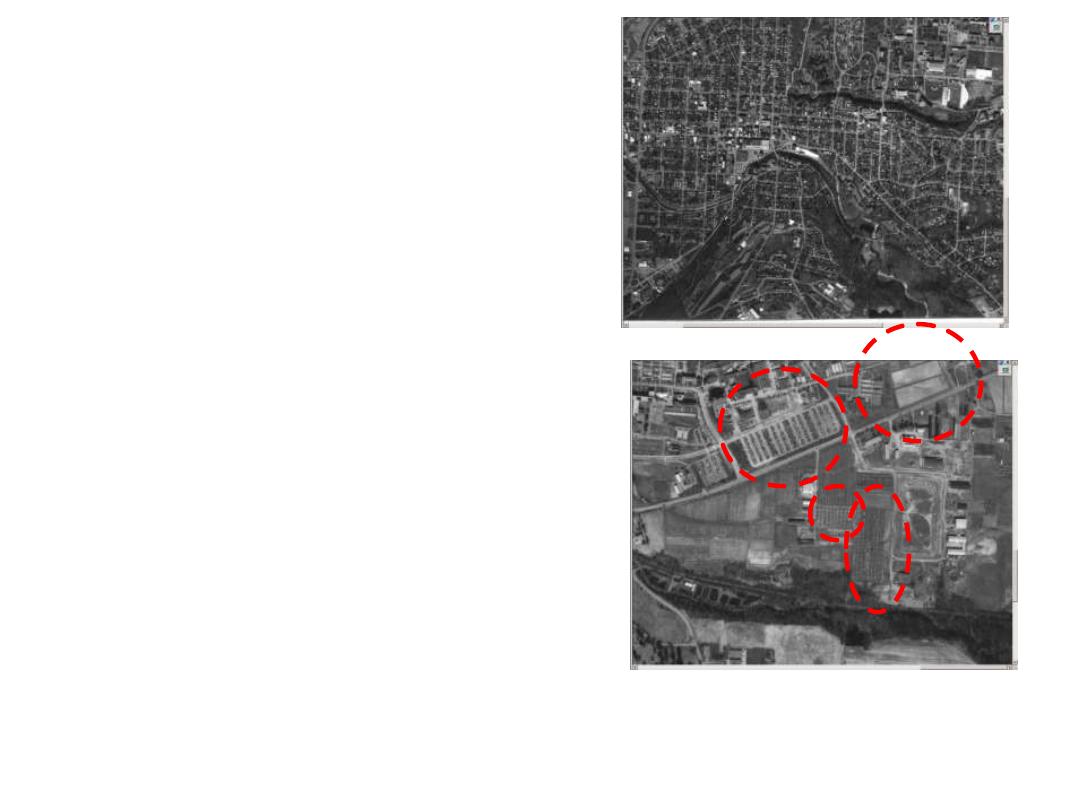
• Pattern: There are so
many examples related to
pattern. These would
include the rectilinear
pattern of the older, urban
neighborhoods in Ithaca,
the straight lines of trees
in an orchard, the
rectilinear shape of the
experimental agricultural
plots, and the
configuration of a parking
lot.
• Also, the pattern of the
golf course with greens,
tees, traps, and fairways is
very easy to spot.
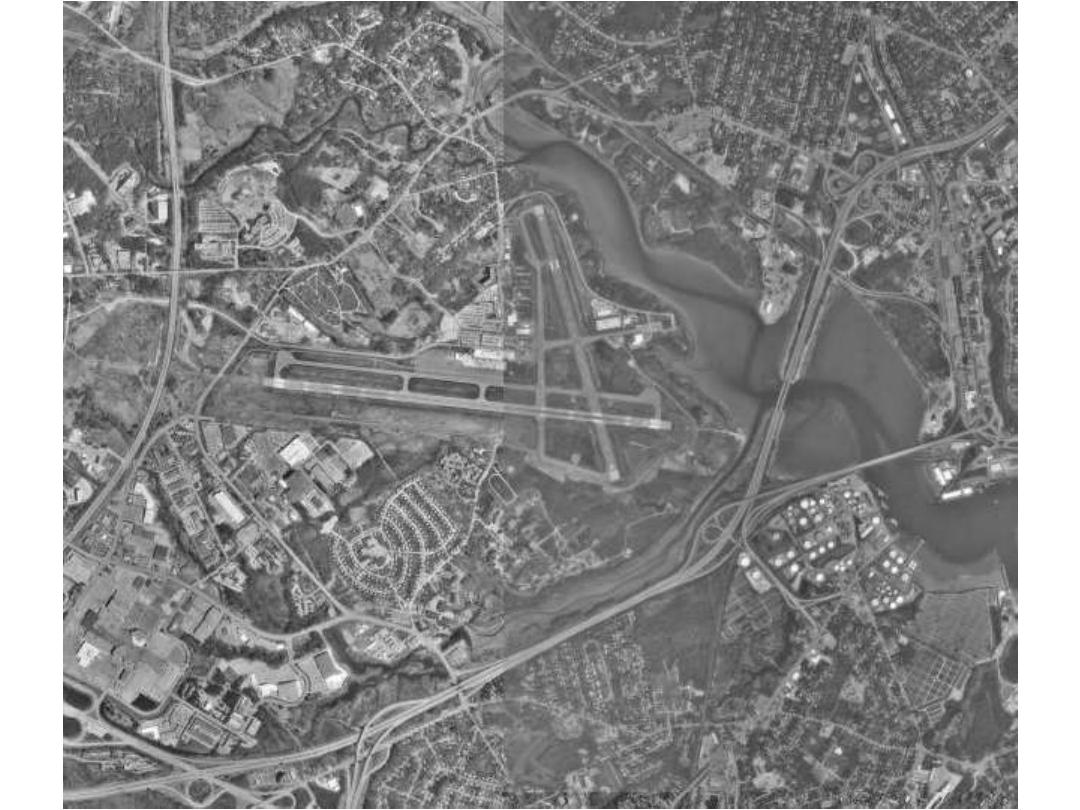
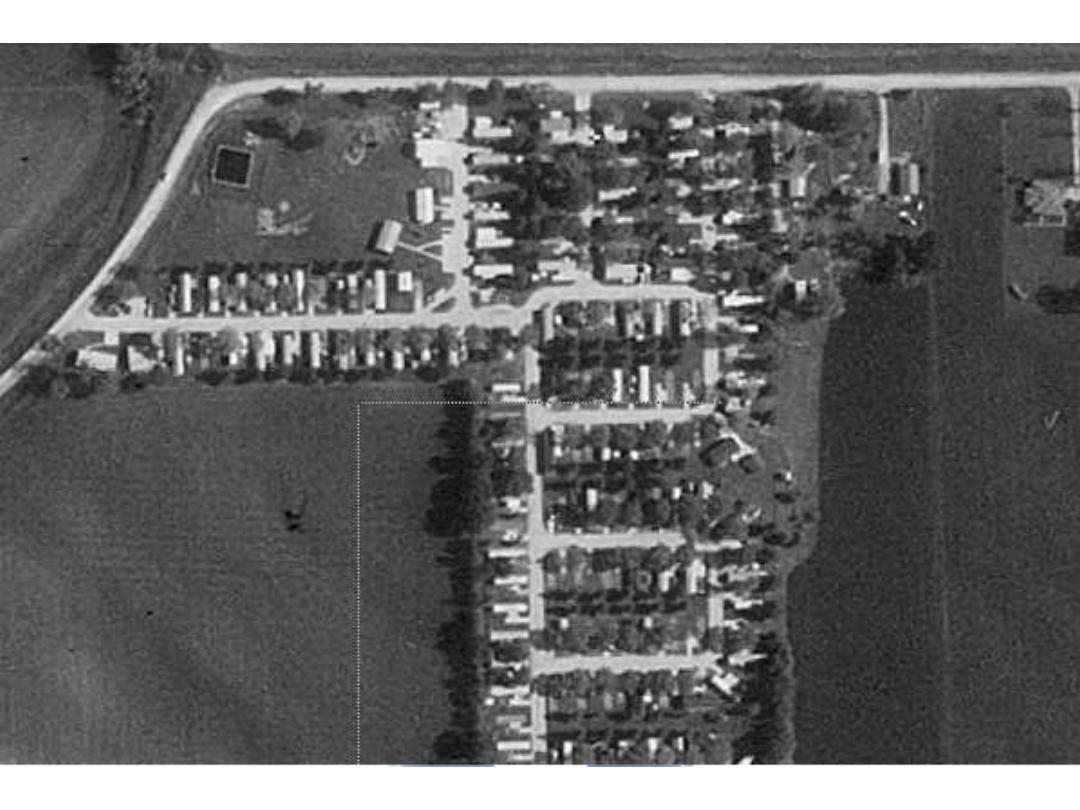
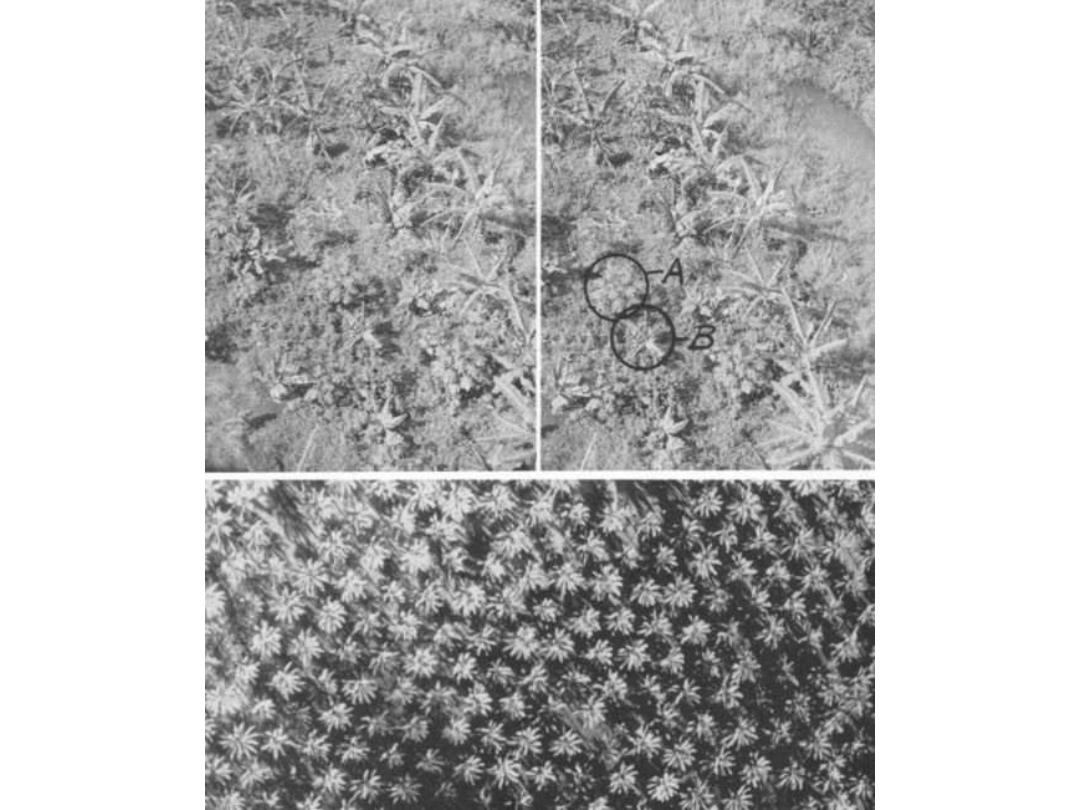
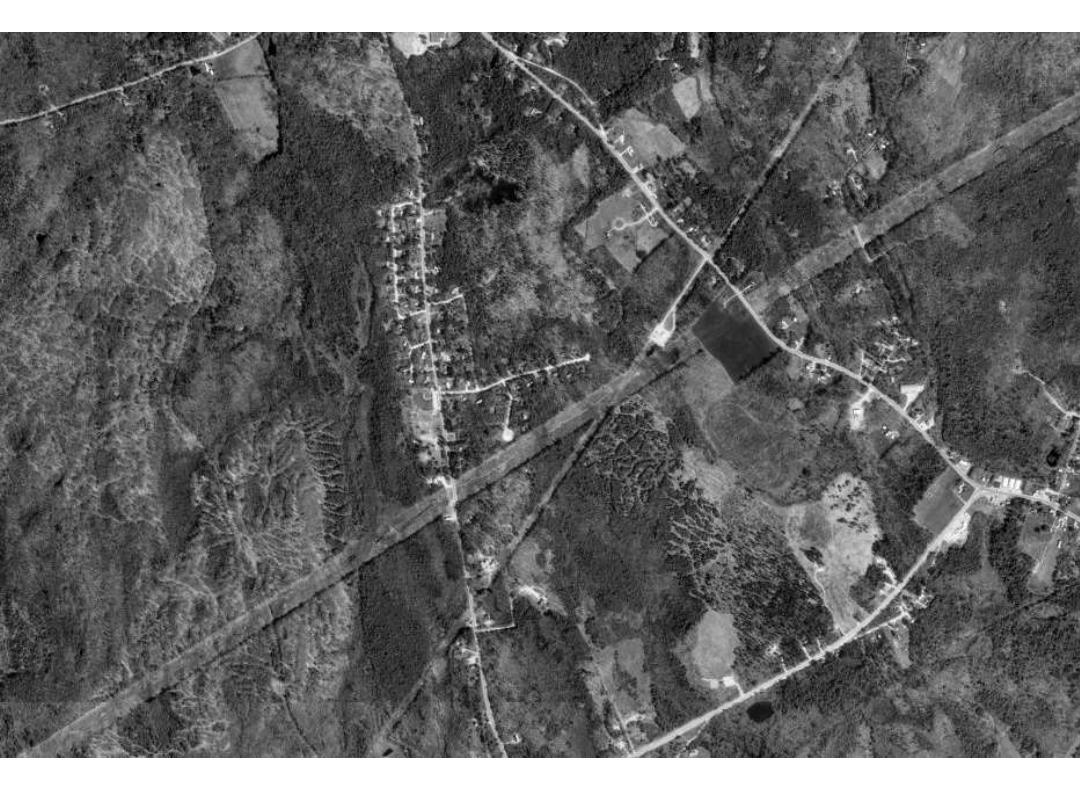
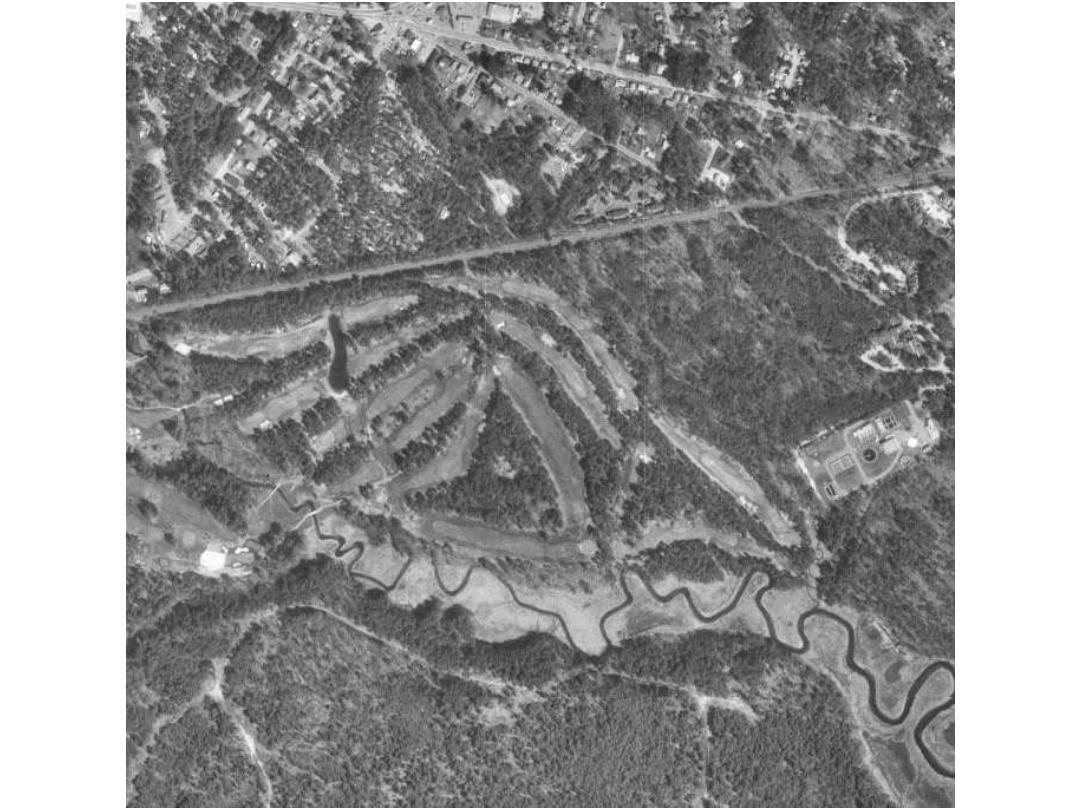
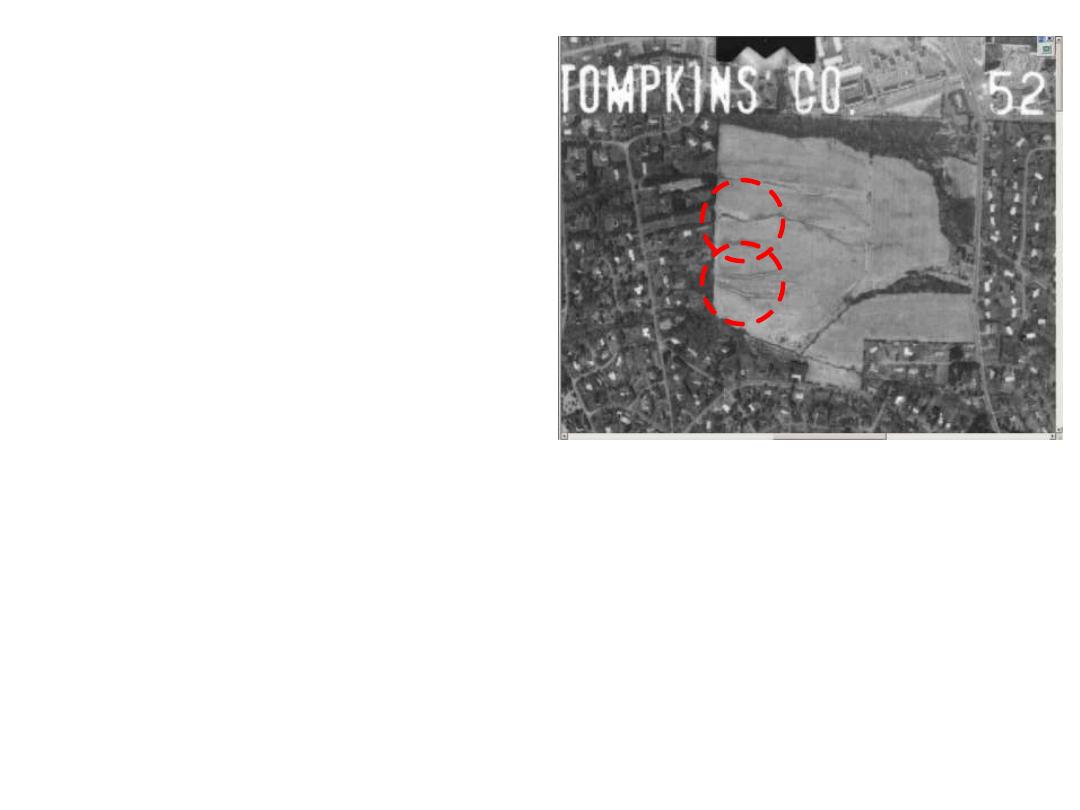
• Pattern: the drainage
pattern for a particular
property on this photo is
easy to see. Also, because
the drainage is relatively
straight, we can assume
that a moderate to steep
slope exists, as water did
not have much
opportunity to meander.
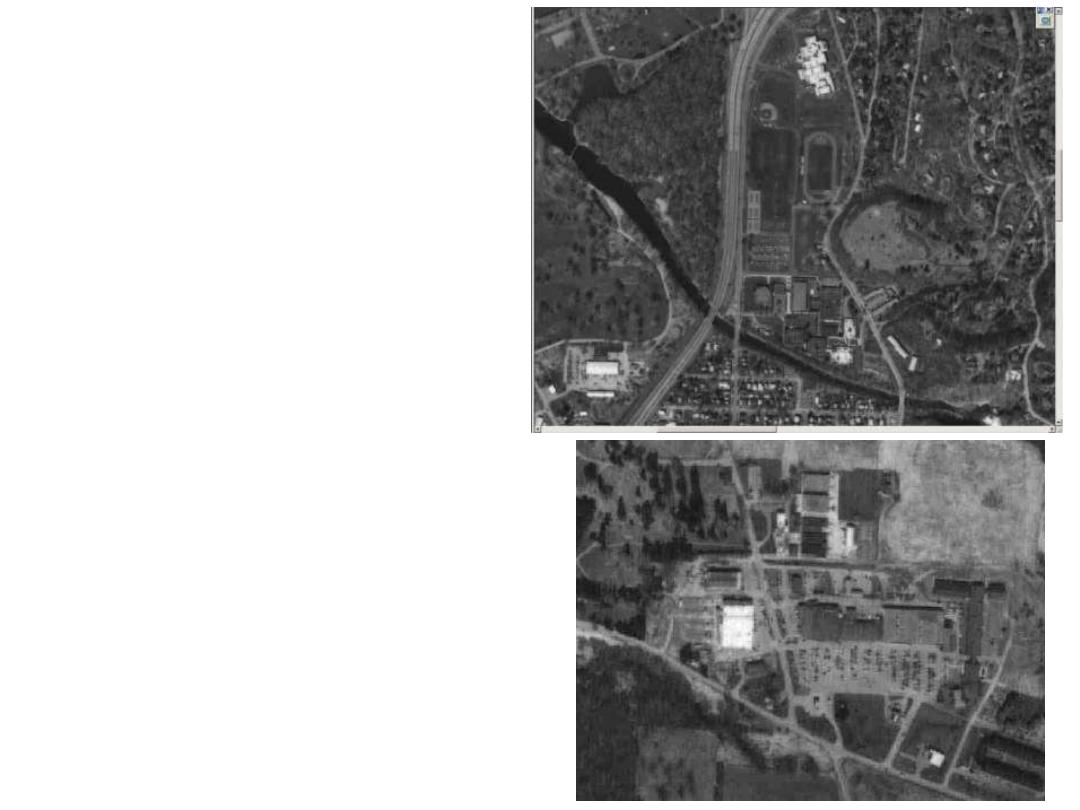
• Relationship: observing
relationships on
photographs is one of the
most fun observations.
For example, a school and
a plaza are interpreted
differently due to
relationships:
– While both have many large
structures on them, schools
typically have playing fields
– Also, plazas usually have
larger parking areas
• Here we see the East Hill
Shopping Plaza (no
athletic fields, but a
campus of buildings), and
the Ithaca High School
campus (with athletic
fields)
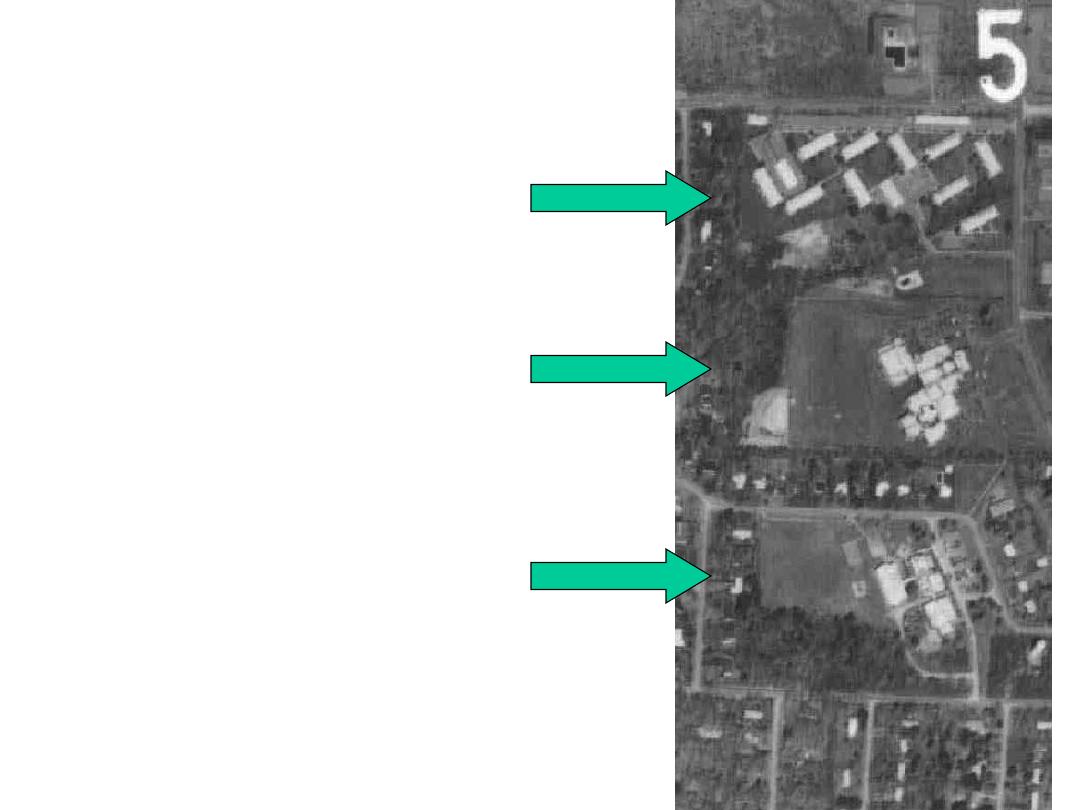
• Relationship: here is another
example of relationship that
shows a middle school and an
elementary school. Notice that
it have buildings like the high
school, and a parking lot, but no
real athletic fields to speak of.
What it does have, however, is
what appears to be a
playground, and is surrounded
by a residential community.
• The structures on the top are an
apartment complex. They
could be tractor trailers, but
“size” gives them away. They
are too large to be tractor
trailers when you consider the
size of the schools below.
• Notice that just north of the
apartment complex is a large
pool. How do we know it’s a
pool, well, the tone gives us a
clue…
Apartments
School
School
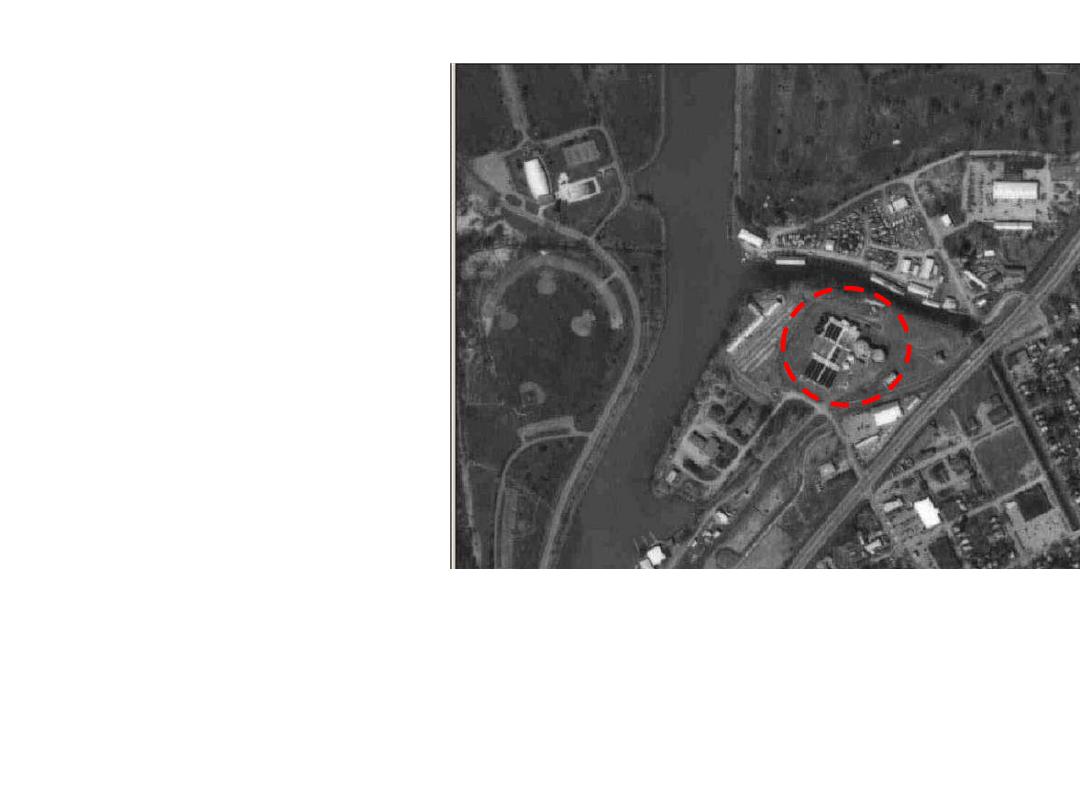
•
Putting it together: there was a
Broadway musical about George
Seurat, the French painter who painted
with dots. One of the hit songs was
called “Putting it Together”, and a line
was “bit by bit, putting it together”. In
many ways, photo interpretation is
putting together our observations bit by
bit to form a coherent understanding of
the image. For instance, identifying the
water treatment plant forces us to use
shape, pattern, tone, and relationship to
make the connection:
– We see the water holding areas in black
(tone)
– We see the large tanks (shape)
– And when you’ve seen one treatment
plant, you’ve seen them all (pattern)!!
•
Notice that across the water is a park.
Why do we know it’s a park? Well,
again, we see multiple ball fields, not
enough buildings to be a school, and a
very large pool.

Aerial mosaics and image maps
• Uncontrolled mosaics performed by
assembling adjacent photographs without
strict concern for geometric integrity
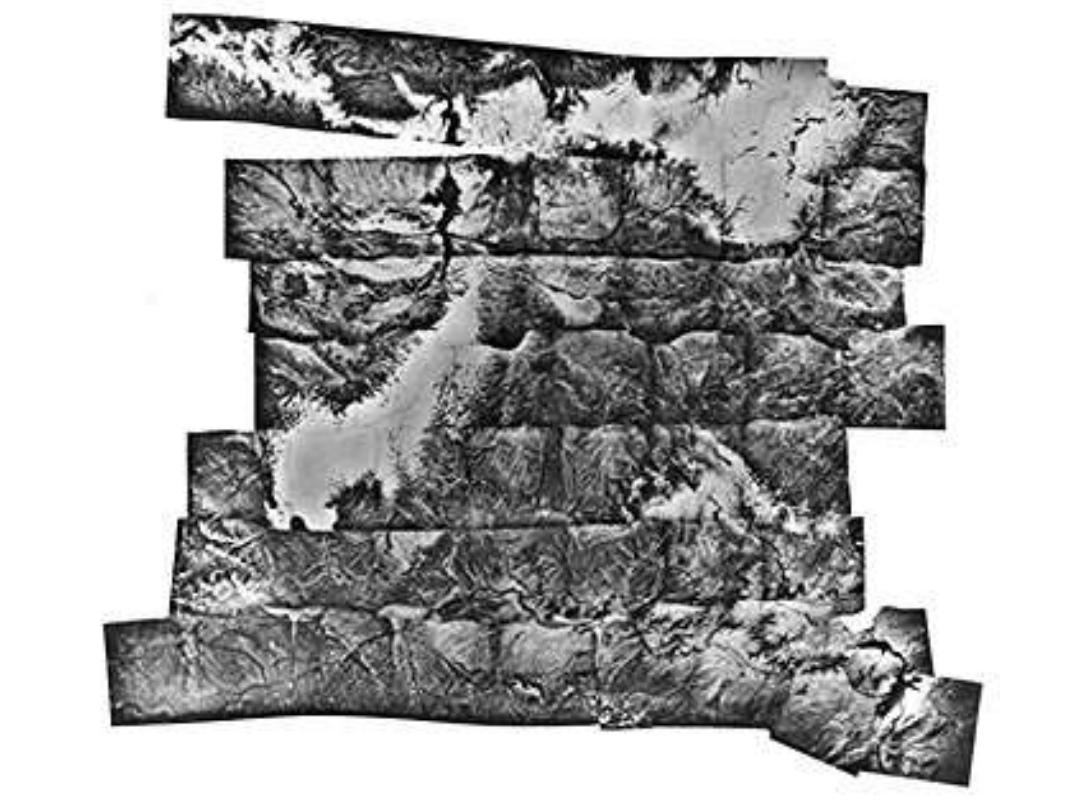

Aerial mosaics and image maps
• A controlled mosaic presents the detail of
an aerial photograph in planimetrically
correct position
